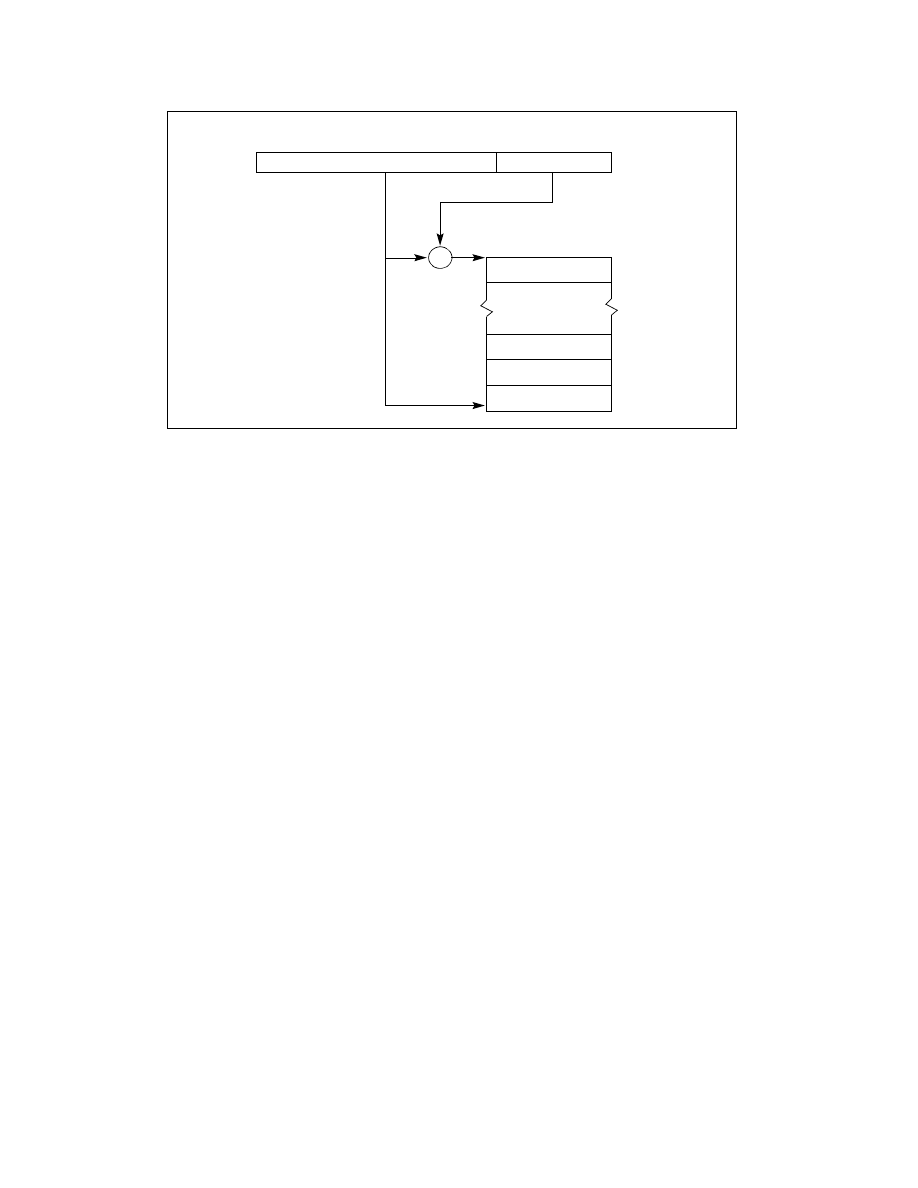
6-10 Vol. 3A
INTERRUPT AND EXCEPTION HANDLING
6.11 IDT
DESCRIPTORS
The IDT may contain any of three kinds of gate descriptors:
•
Task-gate descriptor
•
Interrupt-gate descriptor
•
Trap-gate descriptor
Figure 6-2 shows the formats for the task-gate, interrupt-gate, and trap-gate descriptors. The format of a task
gate used in an IDT is the same as that of a task gate used in the GDT or an LDT (see Section 7.2.5, “Task-Gate
Descriptor”). The task gate contains the segment selector for a TSS for an exception and/or interrupt handler task.
Interrupt and trap gates are very similar to call gates (see Section 5.8.3, “Call Gates”). They contain a far pointer
(segment selector and offset) that the processor uses to transfer program execution to a handler procedure in an
exception- or interrupt-handler code segment. These gates differ in the way the processor handles the IF flag in the
EFLAGS register (see Section 6.12.1.2, “Flag Usage By Exception- or Interrupt-Handler Procedure”).
Figure 6-1. Relationship of the IDTR and IDT
IDT Limit
IDT Base Address
+
Interrupt
Descriptor Table (IDT)
Gate for
0
IDTR Register
Interrupt #n
Gate for
Interrupt #3
Gate for
Interrupt #2
Gate for
Interrupt #1
15
16
47
0
31
0
8
16
(n
−1)∗8